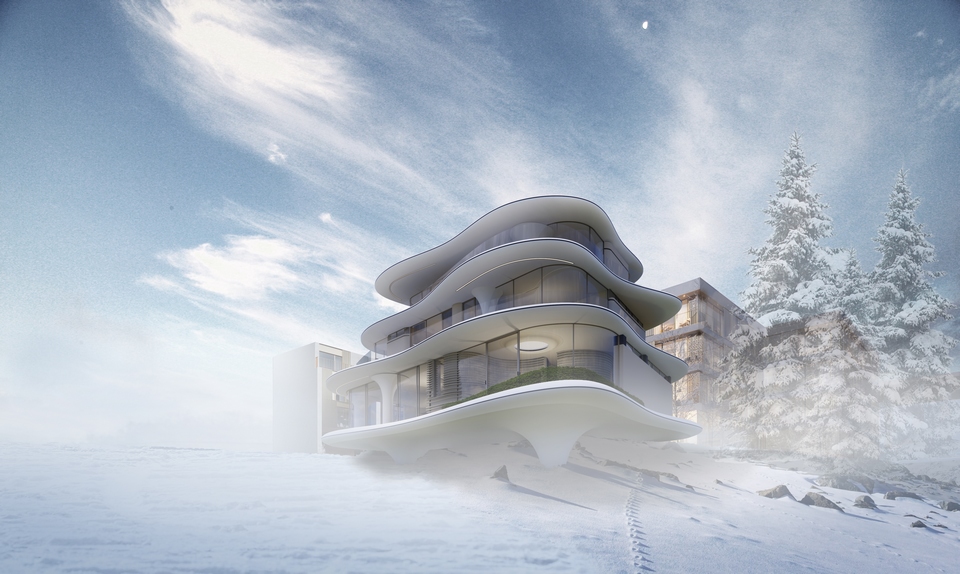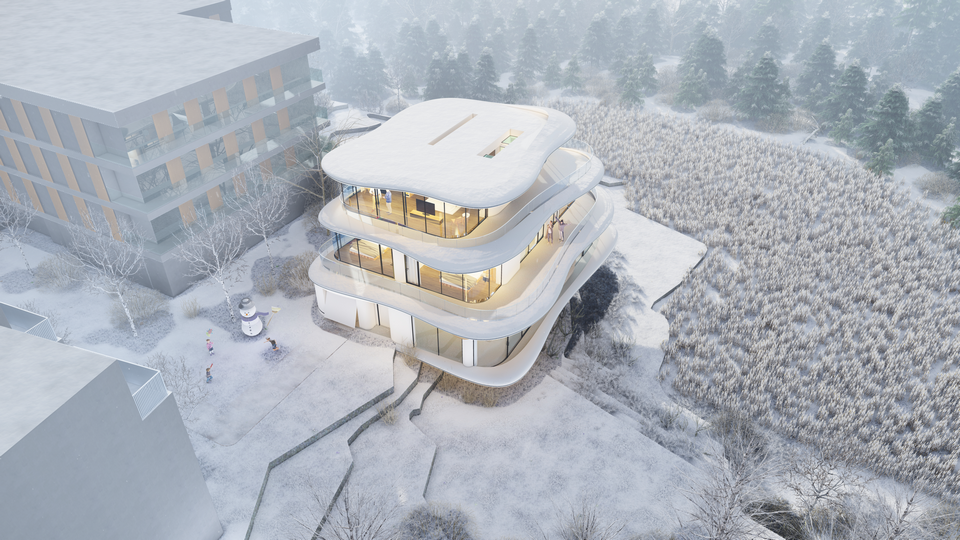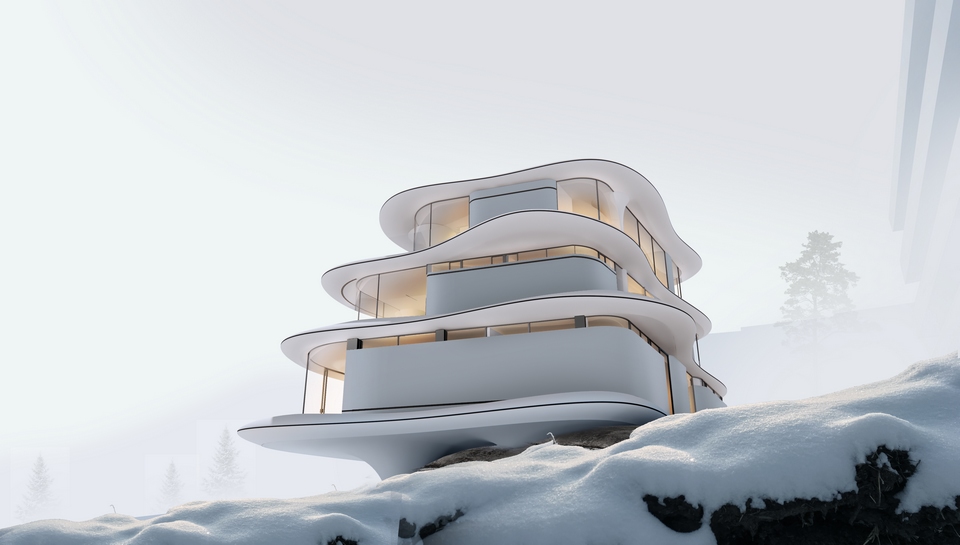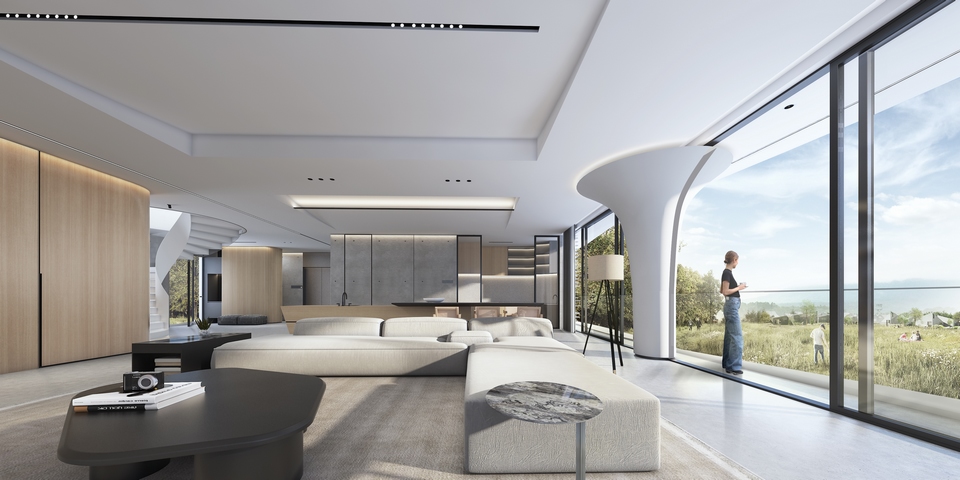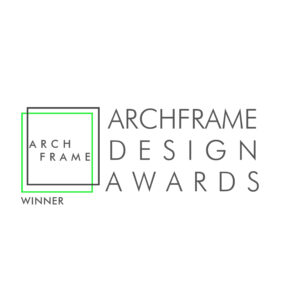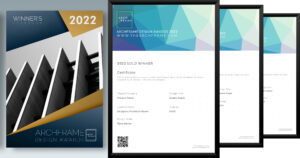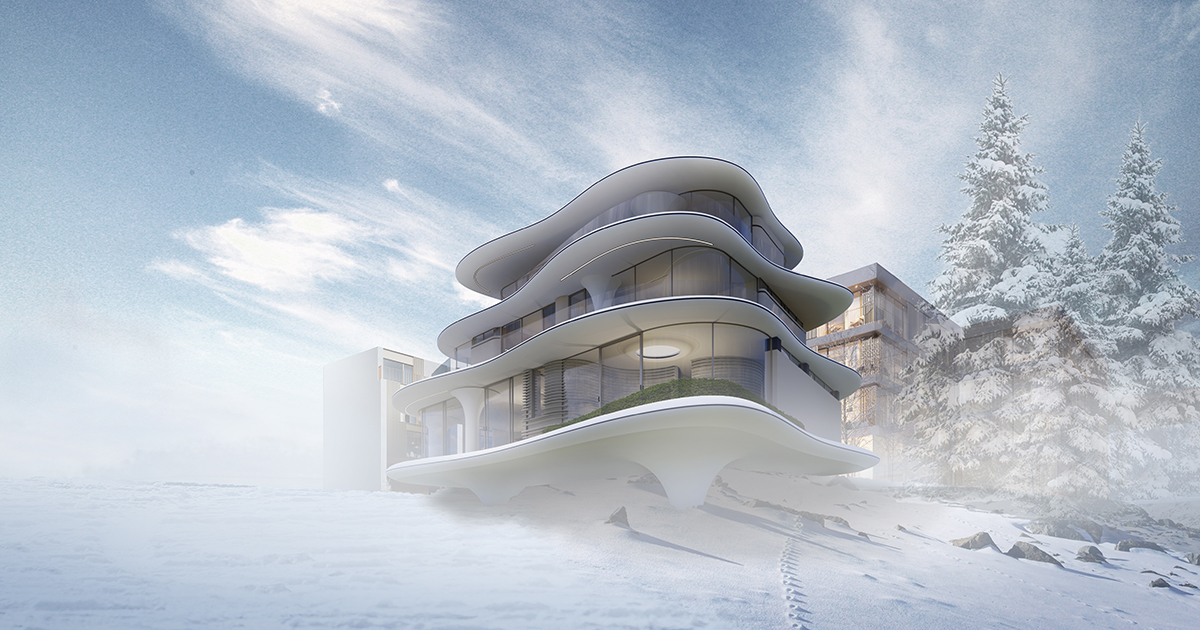
The project is located in Hokkaido, Japan with forests to the north and wilderness to the southeast, overlooking Hokkaido’s iconic snowy Mount Yotei. It carries customers’ yearning for returning to nature, but also realizes the pursuit of art. Taking the snow-capped mountain of Hokkaido as the design inspiration, the clouds and fog surrounding the snow-capped mountain will form the dynamic appearance of the architecture. When viewed from a distance, the architecture is in a state of ups and downs that blends perfectly with the environment. The design of the architecture structure fully demonstrates the design concept that the lightness of floating. The edge of the facade is made of GRC material to form a dynamic expression of the cloud shape of the architecture, whcin makes the building look lighter and softer,and outline the most beautiful landscape of Hokkaido.
Platinum Winner – Archframe Design Awards 2021
Design Firm – GWP Architects
Project Title – Hokkaido Hot Spring Resort Hotel
Project Category – Hospitality Design
Architect/Designer – Guowei Zhang
Design Team – GWP Architects
Practice – Professional Architect
Country – China
In the interior, various areas are connected in series with minimalist moving lines. On the first floor, the migratory line connects the living room, dining room and hot springs to become a huge living area. On the second floor, the simple layout design with three sets of rooms surrounding a leisure area eases the boundary between the dynamic and static areas on the upper and lower floors. The public area and the bedroom on the third floor have clear lines that do not interfere with each other, focusing on the privacy.
Based on the integrated design, the design team fully considers the harmony and unity of interior and exterior decoration styles in the design. The interior space extends the curve elements of the building. As the main color tone of the space, white and raw wood color present the original ecological and simple beauty. The materials mostly use ecological materials such as wood veneer, concrete, marble, etc. to echo the natural and simple expression of the building.
Besides, we successfully used the decolumn design that cleverly hide the load-bearing column in the wall, cabinet or placed outside the wall to ensure the main space visual transparency smoothness, breaking the boundary of the load-bearing columnar in space.
Following the concept of co-existence with the environment, we advocate more use of natural ventilation and natural lighting in the design of the project, thereby reducing the scale and running time of energy-consuming equipment such as lighting and reducing carbon emissions.
